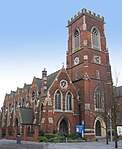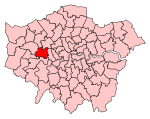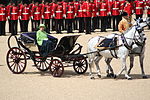Library for Iranian Studies
AC with 0 elementsIranian studiesLibraries in the London Borough of Ealing
Library for Iranian Studies is a major Persian library in Acton district of London, England. It has over 30,000 books in the Persian language, as well as English and other languages. The library receives no governmental funding and is voluntary controlled.
Excerpt from the Wikipedia article Library for Iranian Studies (License: CC BY-SA 3.0, Authors).Library for Iranian Studies
Gunnersbury Lane, London Acton (London Borough of Ealing)
Geographical coordinates (GPS) Address Nearby Places Show on map
Geographical coordinates (GPS)
| Latitude | Longitude |
|---|---|
| N 51.5075 ° | E -0.27527777777778 ° |
Address
Ark Soane Academy
Gunnersbury Lane
W3 8EA London, Acton (London Borough of Ealing)
England, United Kingdom
Open on Google Maps





